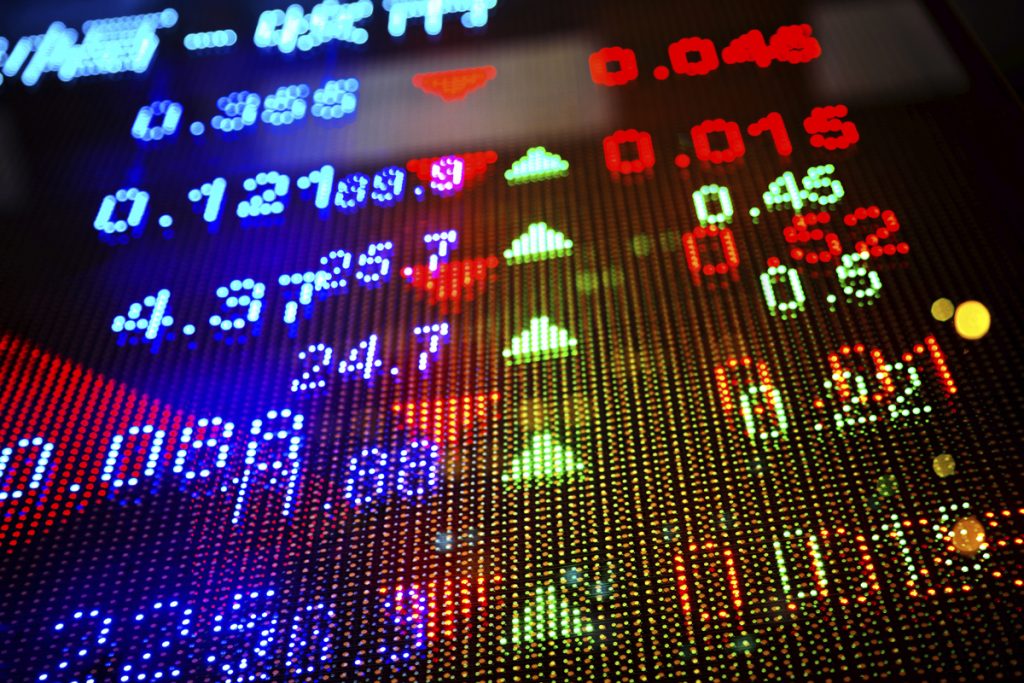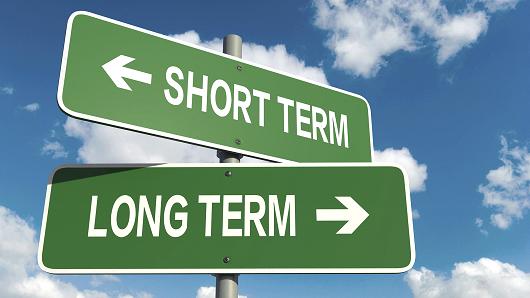Tag: trading strategy
Using Stock Options Straddle Information To Trade Better
For some of you reading this, you may never trade a single option contract in your life. They’re sort of complicated, don’t offer as great liquidity as other products, and are wasting assets. However, paying attention to the stock options market can still be helpful for those don’t even trade them.
For example, the prices of option straddles give us an indication of what the market is anticipating in terms of volatility. In turn, this information can be used to make  better decisions in terms of position sizing.
better decisions in terms of position sizing.
Now, there are generally two types of volatility that traders concern themselves with. The first is historical volatility and the second being implied volatility. Historical volatility measures the amount of randomness in a stocks price for a given period. It’s usually measured by the standard deviation of a stock’s price move.
On the other hand, implied volatility is priced on how traders buy and sell stock options. For example, if traders continue to bid up the price of an option, then eventually prices for those options will be greater. If nothing else changed (the stock price didn’t move), then we can say that the implied volatility increased. On the other hand, if there is constant selling pressure in the options, the value of those stock options should decrease (if the stock price hasn’t moved), and implied volatility should be lower.
Here is a real world example. You’re thirsty for beer, and you’re at the supermarket, you can sift through the beer aisle and find a reasonably priced six-pack. There are a ton of different distributors so prices should be pretty competitive. We can say that  volatility is relatively stable. On the other hand, let’s say we are at Madison Square Garden and we’re thirsty for a beer. Since there is only one vendor, and there is no re-entry if you leave the venue, then you’re at the mercy of the market-maker (aka Madison Square Garden). What normally is the cost for a six-pack of beer at the supermarket is what you’ll get for a single cup of beer at the Garden.
volatility is relatively stable. On the other hand, let’s say we are at Madison Square Garden and we’re thirsty for a beer. Since there is only one vendor, and there is no re-entry if you leave the venue, then you’re at the mercy of the market-maker (aka Madison Square Garden). What normally is the cost for a six-pack of beer at the supermarket is what you’ll get for a single cup of beer at the Garden.
In this case, we can say that the high demand and lack of other choices makes volatility relatively high.
Getting back to options, implied volatility gives us the market’s best estimate on how they believe prices will move. An option straddle is a call option and put option (they are either bought together or sold together), they are of the same strike, and generally the option strikes which are closest to where the stock price is trading.
Let’s say the price of a stock is trading at $34.50, we’d look up the values of the $34.50 call and the $34.50 put and combine them.
The stock options expire in 5 days, the calls have a value of $2.20 and the puts have a value of 2.30.
Hypothetically, if you bought the straddle it would cost $4.50. That means you would need the stock price to rise/fall at least $4.50 to make money. In other words, if we take that $4.50 and divided it by the price of the stock ($34.50), we’d get 13%.
By knowing this information, you can position size accordingly. Of course, the market could get it wrong, meaning the stock price moves more or less than this. But generally, it’s a pretty solid estimate using stock options straddle.
What Makes Traders Succesful In Online Stock Trading
Make no mistake about it, there are several different strategies and techniques that can be applied to make money in the markets with online stock trading. Although they may have different strategies, successful traders do share many things in common even if how they get their results varies. Too often, newbie traders are so

focused on the strategy, that they think it’s the end all be all, but that’s simply not true.
First, successful traders have a plan. They’ll go into a trade measuring what their potential profit and losses might be, before they place the trade. This includes their decision on how they will enter the trade, they might go all in or scale into the position. But the most important takeaway is they have a plan.
Second, they have the discipline to stick with their plan. The discipline comes from repetition, studying similar setups, or even backtesting and forward testing. They have studied past trades and identified what has worked, what currently works and what is not working at the moment. In other words, they are prepared.
If you’re unsure of your strategy, don’t have an outline of your exit, you’re more likely to make emotional decisions when things don’t workout your way. You might panic and not capitalize, or even worse, end up doing something dumb and losing money online stock trading.
Successful traders do not take losing personal. Again, they look at the markets in probabilities. Basically, they’re looking for high probability setups. If it doesn’t work  out, they’ll access their trading plan and see if there is anything they could have done differently. But just because a trade doesn’t work out, it doesn’t mean they will stop trading the strategy if they believe it’s still effective. Sometimes unexplainable things do happen in the market, and that is something you have to learn to be OK with.
out, they’ll access their trading plan and see if there is anything they could have done differently. But just because a trade doesn’t work out, it doesn’t mean they will stop trading the strategy if they believe it’s still effective. Sometimes unexplainable things do happen in the market, and that is something you have to learn to be OK with.
With that said, they focus on their strengths first and work on their weaknesses second. For example, Nike first came out as a shoe company that focused on runners. After they built that side of the business up, they moved onto creating sneakers for other sports. Eventually they expanded to apparel and a ton of products.
That is a solid approach to becoming a successful trader with online stock trading. Develop one or two bread and butter trades and then try to expand to other strategies. Don’t try to do everything at once. Also, don’t get frustrated if you can’t make money trading a certain way, maybe that doesn’t fit your personality or risk tolerance.
Successful traders spend a lot of time reviewing their performance, journaling and searching for methods to improve. Their goal is to scale up their operation to the highest level it can reach. They take a business approach to trading and focus on risk vs. reward. A special emphasis is placed on risk management. What good is your online stock trading if you win 5 straight trades and let one wipe all those gains away?
As you can see, risk management is extremely important. Some traders in online stock trading can trade the similar strategy, but one can have superior results based on how they manage risk, control their emotions, and execute the game plan.
It’s not always about your strategy, it’s sometimes more about the intangibles that will make you into a successful trader in online stock trading.
Should You Pay A Subscription for Good Penny Stocks?
Let’s face it, there are vultures in every industry – including good penny stocks. You see it a lot in the diet and health industry, companies promoting fads, in hopes you take the bait and bite. You might catch an infomercial on the weekends on that can’t-miss money making opportunity. When it comes to investing and trading, there  are hoards of individuals pitching you indicators, strategies, and alerts.
are hoards of individuals pitching you indicators, strategies, and alerts.
Does it ever make sense to sign up and pay for a subscription service pertaining to good penny stocks?
Before I share my opinion, let’s think about it for a second. The more competition, the more efficient the market is and the lower the profit margin. For example, let’s say you are at the supermarket and you’re interested in buying a package of hot dogs. You sift through the aisle and see that there are a number of different brands offering hot dogs. You’ll also notice that prices are relatively comparable. The reason being competition.
Now, imagine that you’re at Yankee Stadium and you’re hungry for a hot dog. You go to the vendor and notice that the price of a hot dog is the same price for 15 hot dogs at the grocery store.
Sounds crazy right?
Well, Yankee Stadium has no competition, you either buy their hot dog, or you don’t buy a hot dog at all. They have no competition, and therefore, they can set prices however they want. With that said, they have a very high profit margin.
Now, imagine that there is a trading strategy for good penny stocks that does very well in the market, meaning that it yields a good profit and has a high probability of  being successful. As more traders pick up on this, competition rises and profits become smaller and smaller. To compensate, traders will have to lever up just to get the same type of returns they were getting before. Eventually there will be too many traders in and the strategy has minimal effectiveness.
being successful. As more traders pick up on this, competition rises and profits become smaller and smaller. To compensate, traders will have to lever up just to get the same type of returns they were getting before. Eventually there will be too many traders in and the strategy has minimal effectiveness.
With that said, I’d be very cautious on anyone selling special indicators or signals. On the other hand, trading rooms, research, and even stock picking services can still be useful.
At the end of the day, there is only so much you can keep your eyes on, in respect to the market. The more qualified eyes, the better. You can learn a lot from good traders, as well as bad trader. Working on idea generation is one of the most important activities as a trader. You see, after a while, some strategies simply stop working, if you don’t work on ideas you’ll eventually be irrelevant. That’s why you’ll hear a lot of traders from the 1990s and 2000s struggle today, they never made the proper changes and are now obsolete – completely out of good penny stocks.
All in all, idea generation services are worth it, even if they are really bad in their picks. Because if they are awful, you can take the other side of their trades and be profitable. On the other hand, services that offer you how to trade or sell you a signal or strategy, the more users they get, the less effective they’ll eventually be.
Most professional traders trade in teams. They share their ideas with a select group of other traders they trust. Just make sure if you do decide to pay for a service, it’s something that fits your budget. Most services offer trials so make sure to test a bunch out before deciding what fits your trading style the most when trading good penny stocks.
If You Don’t Understand ATR Now, You’ll Hate Yourself Later
Ever have the right idea on a stock trade, but not give yourself enough room for it work? For example, you buy too many shares, the stock initially drops and forces you to cover, only to see it later rebound and move in the direction you were expecting. You had the right idea, but sized the trade poorly.
Now, this a problem that many traders deal with, even ones who have several years of experience under their belt. Crazy moves happen and we underestimate volatility sometimes. However, some traders are absolutely clueless on volatility and they miss out on good stocks to buy.

One tool that you could use to gauge volatility is Average True Range (ATR). In order to calculate ATR, the true range must first be discovered.
Now, the true range uses the most current period’s high and low range, not to mention, the previous close, if necessary. There are actually three calculations that need to be conducted and then later compared amongst each other.
In other words, the true range is the largest of these following:
The current period high minus the current period’s low. Example: $10 – $8 = $2
The absolute value of the current period’s high subtracted by the previous period’s close. Example: ($10 – $9)= $1
The absolute value of the current period’s low subtracted by the previous period’s close. Example: ($8- $9) = $1
true range=max[(high – low), absolute value(high – previous close), absolute value(low – previous close)
The ATR is a moving average, usually 14 periods, of the true ranges.
How can we use this to make better trading decisions on day trading stocks?
Well, it can help guide us on how to position size smarter. For example, if an ATR for a stock is $2, and we only want to risk $100 on the trade, buying 1000 shares is probably a horrible decision. If the stock moves just 10 cents you’ll be out of the trade based on your risk parameters. However, if the stock has an ATR of $2, a ten cent move is extremely minor.

Of course, there are other elements to consider like support and resistance levels, along with recent highs and lows. But you can see how some traders can size a trade so poorly without considering volatility. Not only that, it could lead to churning their account, hopping in and out of trades and racking up trading fees.
You want to put yourself in a position to win, you’re not doing that if you are not including volatility in your trading decisions on the best stocks to watch.
What else?
You could also use ATR as a tool to enter/exit a trade. For example, let’s say the ATR for a stock is $1, and you notice there is no news in the name and it’s down $1.25. If the overall market is relatively normal, then playing for a bounce might make for a decent long. The idea is that on a normal day we can expect the stock to trade in this range and that it should mean revert at some point.
Again, this works best when stacked up with other criteria, but you can still see how it can be useful. On the flip side, if the stock price seems overextended, you might lay off and wait for a better entry given its move and ATR.
A lot of rookie traders get their position sizing wrong, along with entries and exits. Having a greater understanding of volatility and using a tool like ATR can help alleviate some of those easy to avoid trading mistakes and zero in on undervalued stocks.
